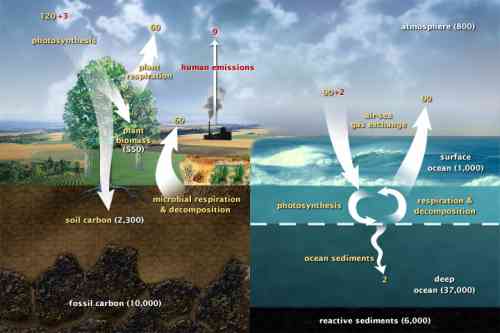The Weekly Watch
Submitted by Lookout on Sun, 03/17/2019 - 7:59am
Here Comes the Sun
or
Come on Baby Light My Fire
or
Come on Baby Light My Fire
The wheel of the year turns to spring this week. There will be more sunlight...longer days... here in the Northern hemisphere. Light is the key to fixing carbon...through photosynthesis. Plants taking CO2 and building it into sugars and other compounds. When we eat plants we burn them back into CO2 and H2O. This balance of photosynthesis and respiration maintains the carbon cycle. For most of human history we have burnt wood as our primary fuel. Trees will regrow and recapture atmospheric carbon. However over the last century we converted to fossil fuels over plant based renewable energy sources. That (and population growth) is what put us on the path of rapid climate collapse.

This diagram of the fast carbon cycle shows the movement of carbon between land, atmosphere, and oceans. Yellow numbers are natural fluxes, and red are human contributions in gigatons of carbon per year. White numbers indicate stored carbon.
https://www.earthobservatory.nasa.gov/features/CarbonCycle


